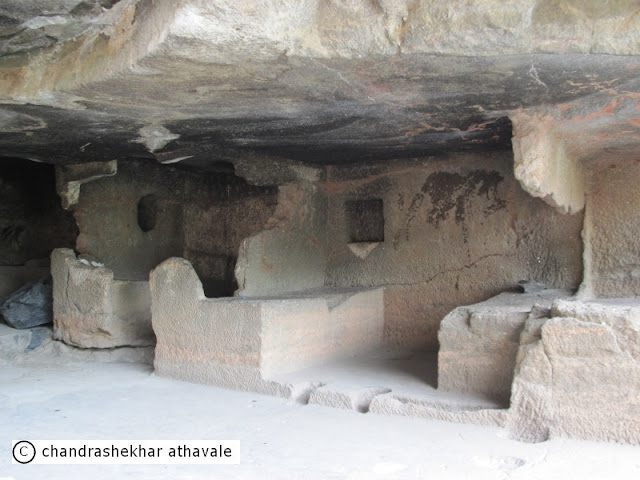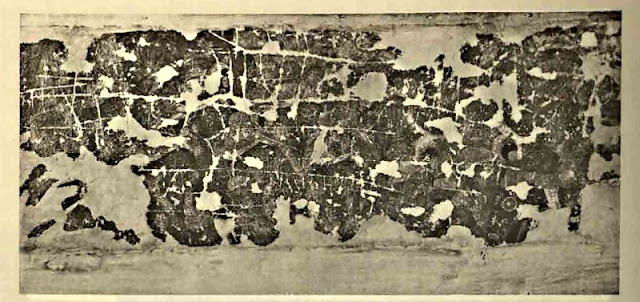Kanchipuram in Early South Indian History
Data: 2.09.2018 / Rating: 4.7 / Views: 837Gallery of Video:
Gallery of Images:
Kanchipuram in Early South Indian History
South Indian Kingdoms I: Pallavas. After the decline of the Sangam Age in the Tamil country, the Kalabhra rule lasted for about 250 years. Thereafter, the Pallavas established their kingdom in Tondaimandalam with its capital at Kanchipuram. Kanchipuram is actually a town in Tamilnadu. South Kanchipuram (Tamilnadu) Kanchipuram saris are characterized by the golddipped silver thread that is woven into premium quality silk. which makes it the most expensive kind of silk sari in India. Kanchipuram district (Tamil: ) is a district in the northeast of the state of Tamil Nadu in India. History of Indian Temple Building Inspired by Buddhist sanctuaries and monasteries carved into hillsides in the 3rd2nd centuries BCE, the Hindu temples of South India represent Indias grandest architectural legacy (see Fig. Typical South Indian style of architecture is reflected in the temple of Kanchipuram. The main characteristics of these Kanchipuram Temple are the presence of shikharas and gopurams. The beautifully engraved temple gateways add to the beauty of the Kanchipuram temple. Kanchipuram or Kanchi attracts a lot of tourists from all over the world who are interested in Hinduism or just want to enjoy the marvel of South Indian architecture and grandeur. It is particularly known for being a culture and philosophical hub. Kanchipuram (sometimes simply called Kanchi or Kanci) is an ancient city in the Tamil Nadu region of southern India. Once a capital of the Pallava dynasty, Kanchipuram was also a noted centre of learning for Tamil and Sanskrit scholars. Known as the religious capital of the South its early 8th century CE Kailasanatha temple is one of the most impressive structures surviving from ancient. Ancient History Of South India South Indian History spreads over 5000 years. Today's South India was undisputed in Ancient period by Invader's until British entered south. The deep mystery surrounds south India that over 3000 years no one invaded south even Mughal's until British entered south. Indus valley civilization is native for south Indian's. After Invasion of Aryan's the native Dravidian. Note: Citations are based on reference standards. However, formatting rules can vary widely between applications and fields of interest or study. The specific requirements or preferences of your reviewing publisher, classroom teacher, institution or organization should be applied. The history of Tamil Nadu is very old and goes back to thousands of years back. It is believed that the Dravidians of Tamil country were once a part of the early Indus Valley settlers and moved south after the advent of the Aryans around 1500 BC. The Mahabalipuram History is two thousand years old. It was the port city of South Indian dynasty of Pallavas during 7th century. The Pallavas ruled Mahabalipuram from 3rd century to 9th century. prehistory and early history, and more recently by illsuited Marxist models. saw a dozen trenches; 5 Kanchipuram, the Pallavas capital, had. Vedic Roots of Early Tamil Culture p are usually underemphasized. Also, I will not deal here with the origin of South Indian people and languages, or with the nature of the process often. The oldest and grandest structured temple in Kanchipuram built in the early 8 th century by the Pallava kings. This temple is surrounded by the 58 tiny shrines, each with the splendid carvings of the various representations of Shiva. The Kanchipuram District is situated on the northeastern coast of Tamil Nadu, adjacent to the Bay of Bengal. It was the capital of the Pallava dynasty during 6th through to the 8th century A. On the history of the early Cholas there is very little authentic written evidence available. Historians during the past 150 years have gleaned a lot of knowledge on the subject from a variety of sources such as ancient Tamil Sangam literature, oral traditions, religious texts, temple and copperplate inscriptions. Kanchipuram, located about 40 miles southwest of Madras (Chennai), is one of the seven sacred cities of India. It has been an important South Indian religious and cultural center since well before the Pallava dynasty of the sixth to eighth An epitome of an early structural temple, Kailasanath Temple reflects the rapidly emerging South Indian style: gopuras, pilastered walls, a pyramidal shikhara, and a perimeter wall enclosing the. Kanchi was given place of pride among cities by Sanskrit poet Bharavi as early as seventh century AD when he called it Nagareshu Kanchi, said historian, and convenor of South Indian Social. Kanchipuram district is a district in the northeast of the state of Tamil Nadu in India. In Early Days Chengalpattu is called as the District. In Later Kanchipuram is considered as a District. It is bounded in the west by Vellore District and Thiruvannamalai District, in the north by Tiruvallur District and Chennai District, in the south by Viluppuram District and in the east by the Bay of Bengal. HISTORY OF SOUTH INDIA Indian history. The Kongu Rattainscription of early 5th century AD bear description of the conflict between the Pandyas and the Kongu Rattas. which was once a major, flourishing port. The gorgeous temples at Kanchipuram also testify to the architectural excellence prevalent at that time. Prehistoric Period: While it is widely accepted that Kanchipuram had served as an Early Chola capital, The city was regarded as the Banaras of the South. The Dravida Kingdom of the Mahabharata must have been centered on the Kanchipuram region. ) the Pallavas made themselves into local rulers and slowly spread their control southwards from the region of Kanchipuram. Kanchi under them became an important temple town and a center of trade and commerce. the last phase of the ancient period of Indian history (starts in early 4th century A. South Indian History Tnpsc Questions are listed in details, most of the question have been asked in Group Exams. Read this article to learn about the History of the Pallavas of Kanchipuram! The Ikshvakus of the Krishna Guntur region were supplanted by the Pallavas. not only set the standard in the South Indian peninsula, but also largely influenced the architecture of the Indian colonies in the Far East. The History of Early Medieval Northern. Enter your mobile number or email address below and we'll send you a link to download the free Kindle App. Then you can start reading Kindle books on your smartphone, tablet, or computer. History of Kanchipuram District The history is very colourful as different people come at different time in Kanchipuram and enhanced it culturally. The Pallavas, Cholas, Vijayanagar rulers, Muhammadan Kings, and also the British before Independence administered the district Kanchipuram. Chennai boasts of a long history from ancient South Indian empires through colonialism to its evolution in the 20th century as a services and manufacturing hub. Contents 1 Ancient Times 2 Early European settlers 3 Arrival of the British o 3. 1 Permission from Vijayanagara Rulers[1 4 1750s to 1947 5 Postindependence 6 City Name 7 Notes 8 References Note: Citations are based on reference standards. However, formatting rules can vary widely between applications and fields of interest or study. The specific requirements or preferences of your reviewing publisher, classroom teacher, institution or organization should be applied. Kanchipuram, sometimes called Kanjeevaram or Kanchi, is a small town in Tamil Nadu. One of the most important spiritual centres of Hinduism, and a major pilgrim destination; Kanchipuram has several medieval temples with spectacular architecture. Tiruvelukkai located in Kanchipuram in the South Indian state of Tamil Nadu, is dedicated to the Hindu god Vishnu. Constructed in the Dravidian style of architecture, the temple is glorified in the Divya Prabandha, the early medieval Tamil canon of the Azhwar saints from the 6th9th centuries AD. Home Reference Indian Temples Indian Regional Temples South Indian Temples Temples of Tamil Nadu Temples of Kanchipuram Kanchipuram is one of the great mythological cities of Tamil Nadu and is said to be a temple city of the state. Varadharaja Perumal Temple or Hastagiri or Attiyuran is a Hindu temple dedicated to Lord Vishnu located in the holy city of Kanchipuram, Tamil Nadu, India. It is one of the Divya Desams, the 108 temples of Vishnu believed to have been visited by the 12 poet saints, or Alwars. It is located in a suburb of Kanchipuram known as the Vishnu Kanchi that is a home for many famous Vishnu temples. South Indian history has been based mainly on the so called Cankam literatures. ciety or the poets' own culture, but a society from the past, or life in small, primitive villages which are far removed from the poets' own cosmopolitan milieu. Golden period of Indian History The Mauryan Empire: Although Indian accounts to a large extent ignored Alexander the Great's Indus campaign in 326 B. , Greek writers recorded their impressions of the general conditions prevailing in South Asia during this period. This lesson talks about several important dynasties of late ancient and early medeival India. The dynasties chosen are the ones who made important contributios to art and architecture. This contributions are discussed. the cave art of Ajantaa, ellora and elephants caves is also covered. Sri Vaikunta Perumal Temple, Kanchipuram Vaikunta Perumal Temple or Thiru Parameswara Vinnagaram is a temple dedicated to the Hindu god Vishnu, located in Kanchipuram in the South Indian state of Tamil Nadu. Nine yards of South silk When in Kanchipuram, you cannot miss out on the famous Kanchipuram silk sarees. In 2005, Kanchipuram Silk Saris received the Geographical Indication tag, the first product in India to carry this label. From Vedic age, all that is pure and sublime in Nature's creation have been objects of worship for the Indian. Our history of ancient tradition and culture interwoven in temple worship and pilgrimage. I knew about Kanchipuram, the silk city of India, an old Tamil town having the history of thousands of years, the numerous temples that spread over the city and the culture it beholds. Though very nearby to Chennai, only very recently I was able to visit this place. Kanchipuram is one of the mostancient cities of southern India and traces its history to the 2nd century bce as an early Chola capital. From the 3rd to the 9th century ce, it was the Pallava capital, and from the 10th to the 13th century, it served as the late Chola government headquarters. Kanchipuram was the capital of the medieval South Indian Kingdom of Pallavas. The Pallavas were instrumental in the transition from rockcut architecture to stone temples. We visit Ekambareswarar and Kailasanathar temple of Pallava dynasty to appreciate these architectural wonders built in 600 AD. Kanchipuram was known in early Tamil literature as Kachi or Kachipedu but was later Sanskritized to Kanchi or Kanchipuram. while the district retains the name Kanchipuram. History Kanchipuram Timeline The city was regarded as the Banaras of the South. Kanchipuram grew in importance when the Pallavas of southern Andhra Pradesh, wary. History of India: Know about Indian History including Pre Historic Era, Stone Age, Bronze Age, Early Historic Period, Vedic Period, Mahajanapadas, Persian and Greek Conquests, Maurya Empire. History: This vast temple with high rising Gopurams dominates the skyline of Kanchipuram the historic capital of the Pallavas. Kanchipuram a temple town is considered to be the foremost among the seven prime pilgrimage centers in India. The city is situated around 70 km from Chennai in the south Indian state of Tamil Nadu. Climate The climate of Kanchipuram district is tropical with an almost uniform temperature throughout the year. Although Indian accounts to a large extent ignored Alexander the Great's Indus campaign in 326 B. , Greek writers recorded their impressions of the general conditions prevailing in South Asia during this period. provides the first clear and historically verifiable date in Indian history.
Related Images:
- The pursuit of happyness
- Dvd scr rip
- Anatomy Lessons From The Great Masters
- Packaging Essentials 100 Design Principles for Creating Packages
- Mpeg 4 to avi
- Iron maiden hallow
- Dishonored Pc Rune Id For Cheat Engine
- The king is back
- Sql server magazine
- Nightmare before christmas night
- Savages dvdrip french
- Mack Camelback Bushing Installation Guide
- Civilization 5 complete
- Blood Ritual samael
- Rom play 1
- Tomb raider 2018 fix
- Merlin season 2 bit
- Portrait of a legend
- Crazy chicken the winged pharaoh
- Dig tut micro
- Dvdrip tamil 700mb
- Shanghai 2018 1080
- The Jungle Search For Natures Cures
- Onyx postershop 10 crack torrent
- Toefl Test In Ghana
- Top gear 21x02
- Stills and nash
- Now the 90s
- Tales from the beach
- Wonders of the Universe
- TANK ONE MAN
- Day off nicole
- Duo tl sergei naomi suga
- Ebooks Klb Maths Book Four In Kenya
- Trish out water 005
- Dual audio hindi 1986
- Mixcraft 6 Torrent
- 720p star wars rebels
- Blow Hot Blow Cold
- Tucker a man and his dream
- Cracked adobe after effects
- The sims eng
- The first 48 season 7
- Orphan black season 2 complete 720p
- Free 480 12
- Droid 3 For Dummies
- Hart of dixie s02e20
- El Libro De Los Cerdos Pdf
- 720p white house
- Team 2 lions
- Saluran distribusi pdf
- Intouchables
- Divinity Original Sin gog
- Ministry of sound pump it up
- Cisco ios xr fundamentals
- Sleep 8 Simple Steps To Better Rest Sleep Better
- Touchin lovin trey songz
- Tamil dubbed
- Der herr der ringe
- Vista7 slic ldr activation
- Hirens Boot 13
- Bates motel s02 hdtv x264 killers
- Esprits criminels complete
- Horrible sakura trick
- Pharrel williams ft daft punk
- Sunday Bloody Sunday 1971
- Ncis s02 french
- Alien dawn s01e02
- Tamil eng sub
- Summer ummet ozcan
- Eagle cad key
- Like a man 720p yify
- The official uk top 40 singles 2018
- Company eng sub
- Super show 1 dvd
- Outlander 720 mp4
- Transputer Instruction Set A Compiler Writers Guide
- Real steel world mod apk
- Les sentier de la perdition












